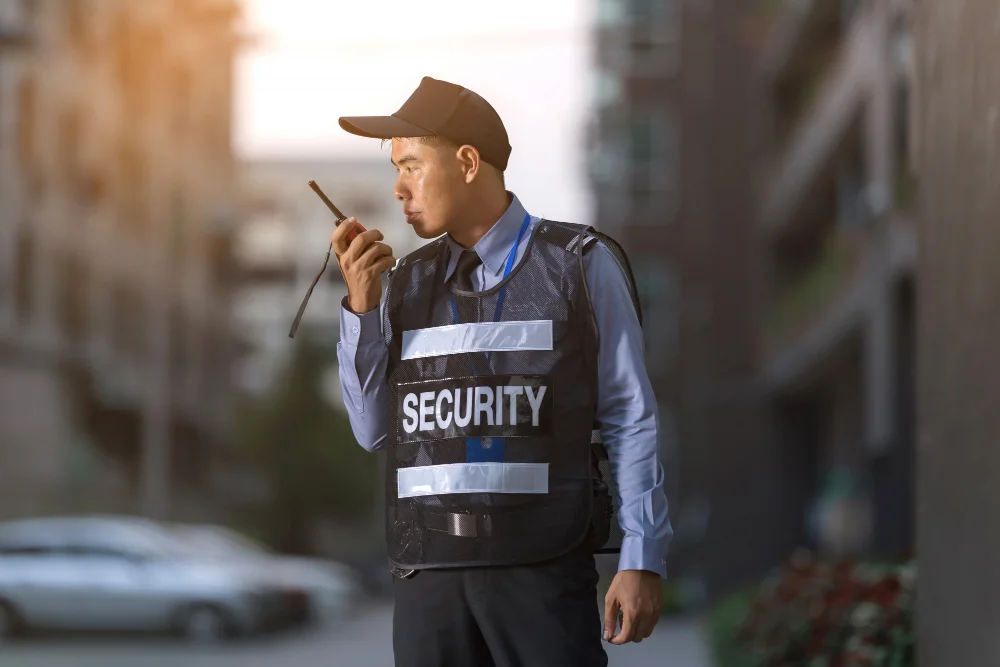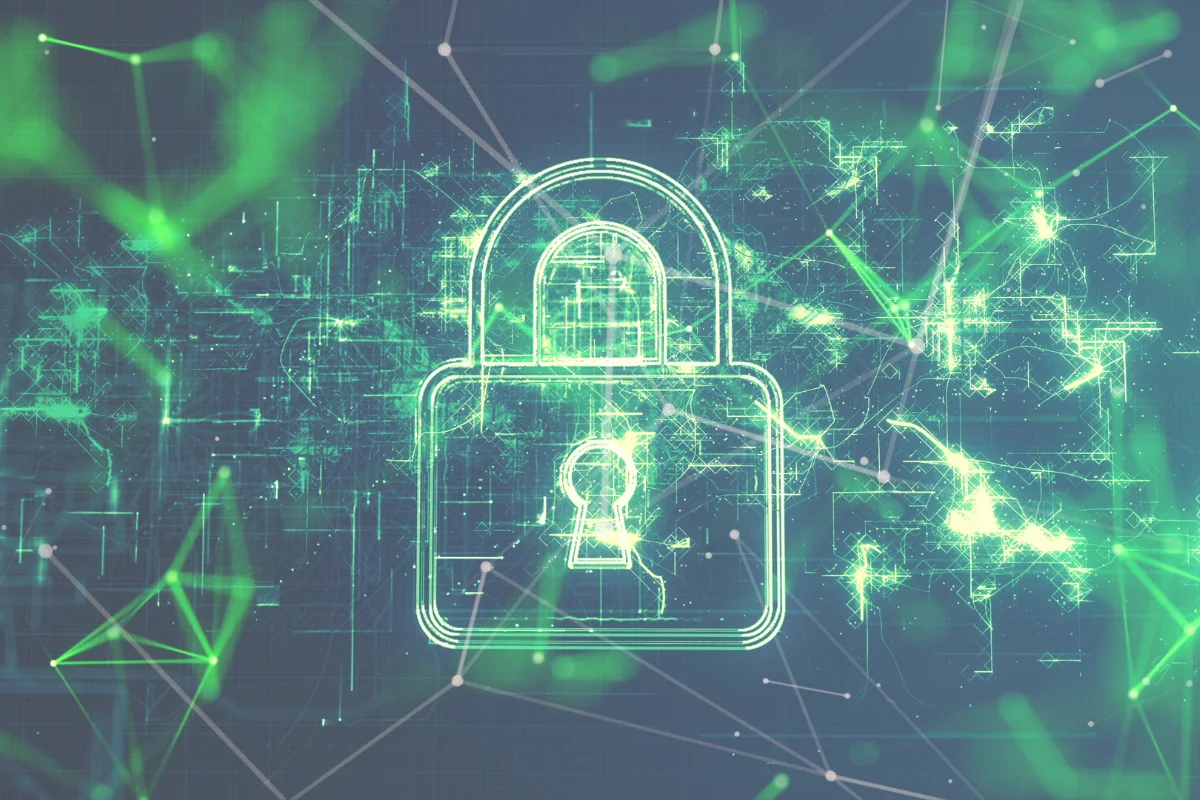Just as you protect your digital assets, safeguarding the physical space of your organization is paramount to ensuring its overall security. In this post, you will discover ten imperative strategies that will help you assess vulnerabilities, implement effective measures, and foster a safer environment for your employees and assets. By applying these strategies, you can bolster your physical security and mitigate risks, ensuring peace of mind for everyone in your organization.
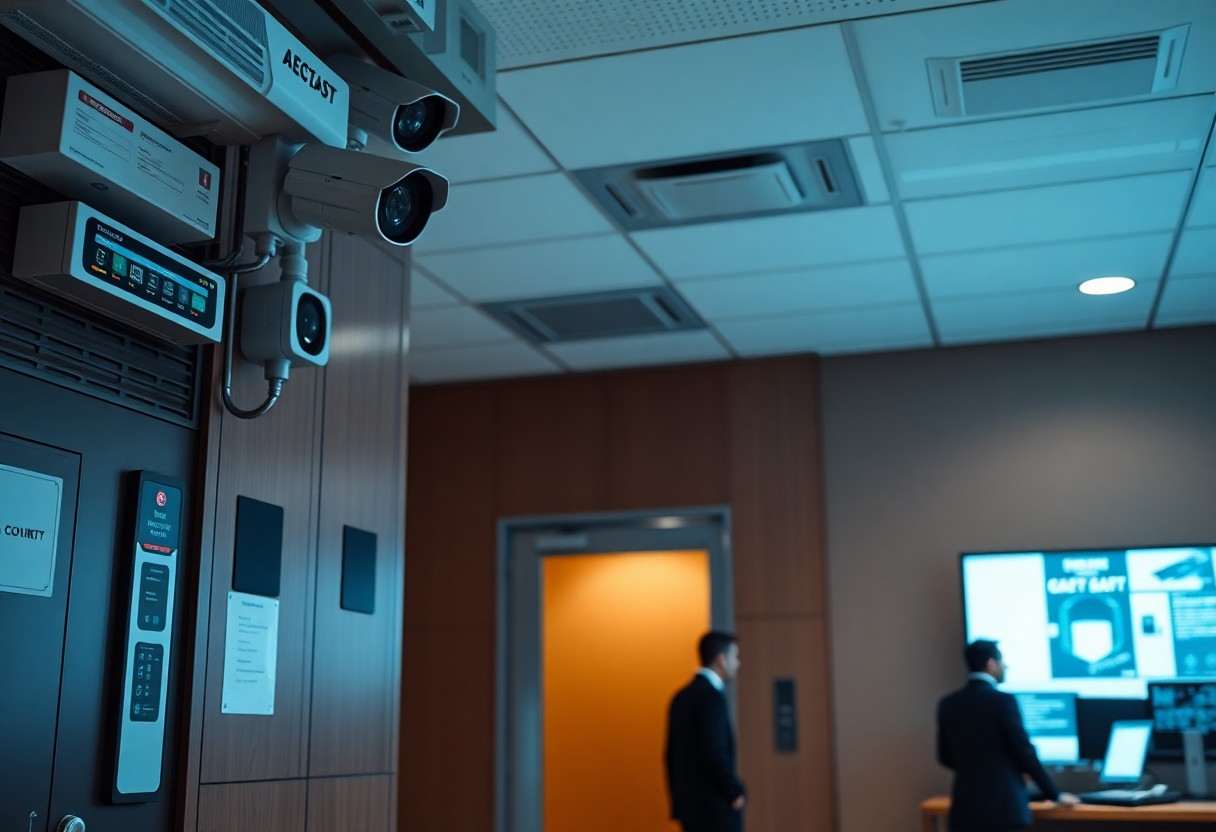
Access Control Measures
While implementing effective access control measures is crucial to safeguarding your organization, it’s vital to ensure that only authorized personnel have entry to sensitive areas. This involves the thoughtful use of technologies and protocols to restrict access and monitor who enters your premises. By doing so, you create a layered security approach that helps deter potential threats and enhances overall safety within your workspace.
ID Badges for Employees
The use of ID badges for employees is a straightforward yet effective method to fortify your organization’s physical security. These badges not only identify your staff but also signal to visitors that certain areas are restricted, fostering an environment of safety and accountability.
Visitor Management Systems
If you frequently host visitors in your workplace, implementing a robust visitor management system can be a game changer in tracking and controlling access to your facilities. These systems help you screen guests, ensuring they are vetted and signed in properly before gaining entry.
For instance, many modern visitor management systems allow you to pre-register guests, assign them temporary access badges, and even provide notifications to your staff of their arrival. This level of organization not only enhances security but also improves visitor experience, making it easier for you to maintain a professional and secure environment while efficiently managing the flow of visitors through your premises.
Surveillance Systems
Assuming you want to reinforce your organization’s physical security, implementing a robust surveillance system is a vital strategy. Surveillance systems, including CCTV cameras and remote monitoring solutions, empower you to monitor activities in real-time, deter potential threats, and collect evidence when necessary. By integrating advanced technology, your organization can create an environment that promotes safety while fostering a sense of security among employees and visitors alike.
CCTV Cameras Installation
There’s a powerful impact that CCTV camera installation can have on your organization’s overall safety. By strategically placing cameras in key locations, you can monitor high-traffic areas and vulnerable spots, deterring unlawful activities and enhancing your security presence. Ensure that cameras are regularly maintained and upgraded for optimal performance, thereby reinforcing your commitment to a secure environment.
Remote Monitoring Solutions
You can elevate your security measures by incorporating remote monitoring solutions into your surveillance systems. These solutions allow you to keep an eye on your organization around the clock, ensuring that you’re always aware of activity on your premises.
A remote monitoring solution provides significant advantages during non-business hours, enabling you to observe live footage or receive alerts through your mobile devices. By utilizing smart technology and cloud-based systems, you can access real-time video feeds and historical recordings from anywhere, improving your ability to respond promptly to incidents. This proactive approach can enhance your organization’s overall security efficiency and help maintain a safe environment.
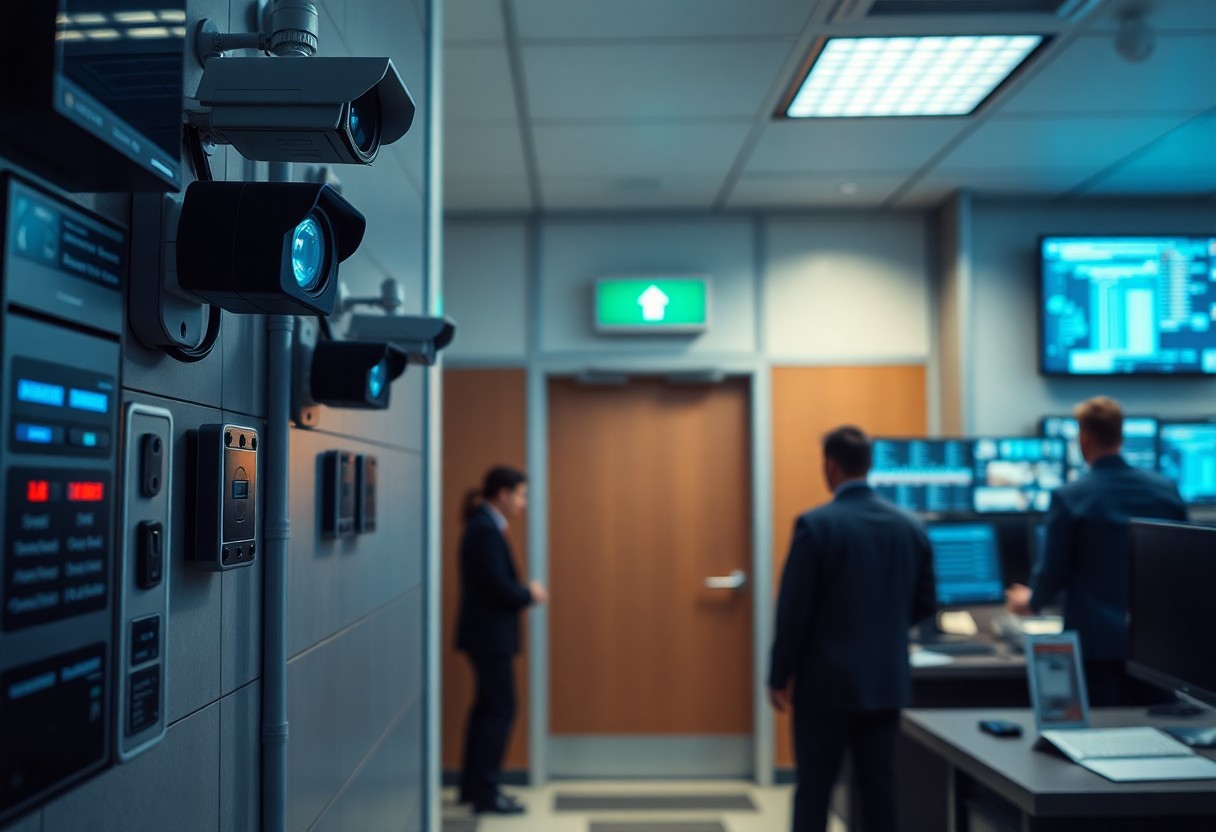
Physical Barriers
Unlike virtual security measures, physical barriers play a vital role in safeguarding your organization’s premises. By implementing solid physical defenses, you can deter unauthorized access and ensure the safety of your assets and personnel. From fencing to access control systems, integrating effective physical barriers significantly enhances your security protocols, creating a fortified environment for your operations.
Secure Fencing Perimeters
While establishing secure fencing perimeters may seem straightforward, it is important to choose robust materials and designs that align with your organizational needs. A well-constructed fence acts as the first line of defense, deterring potential intruders and granting you greater control over who accesses your property.
Controlled Entry Points
An effective physical security strategy involves creating controlled entry points for personnel and visitors alike. These points should be strategically located and monitored to limit access to your organization’s premises. Employing measures such as security guards, turnstiles, or access card systems ensures you authenticate individuals before allowing entry.
You can elevate your controlled entry points by incorporating technology such as biometric scanning or RFID access cards. Ensure that visitors are identified and logged, facilitating traceability in case of incidents. Regularly review and update access privileges to prevent unauthorized entries from former employees or visitors who no longer need access. By maintaining strict control over who enters your facilities, you foster a safer environment for your teams and assets.
Security Personnel
Keep in mind that having well-trained security personnel is a vital aspect of enhancing your organization’s physical security. They serve as the first line of defense against potential threats and can significantly deter criminal activity. Properly trained security guards not only understand the protocols required for emergency situations but also play an important role in maintaining a safe environment for your employees and visitors.
Trained Security Guards
An effective security team begins with trained security guards who possess the skills to manage various situations. They should be adept in conflict resolution, familiar with safety procedures, and able to recognize suspicious behavior. Providing your guards with ongoing training ensures they remain alert and ready to respond to incidents, reinforcing your organization’s commitment to safety.
Regular Patrol Schedules
Regular patrol schedules are vital to maintaining a visible security presence. These patrols not only deter potential intruders but also allow your security team to monitor various areas of your property consistently. It’s imperative to create a schedule that covers all critical areas at varying times to maximize effectiveness.
For instance, assigning your security personnel to patrol high-traffic areas during peak office hours and more secluded locations during quieter times can significantly enhance observation and preparedness. Taking a proactive approach can help identify issues such as unauthorized access or safety hazards immediately. A varied and unpredictable patrol schedule will decrease the likelihood of planning by potential intruders, making your organization a less attractive target.
Emergency Preparedness
All organizations must prioritize emergency preparedness to ensure that employees are equipped to respond effectively during a crisis. This involves creating comprehensive plans and procedures that address potential emergencies, including natural disasters, fires, or security breaches. By fostering a culture of readiness, you can enhance the overall safety of your workplace and minimize risks to personnel and assets.
Evacuation Plans
To create an effective evacuation plan, you should outline clear routes and procedures that employees can follow during an emergency. Conducting risk assessments and considering factors such as building layout and potential hazards will help tailor the plan to your organization’s specific needs. Additionally, ensure that everyone is aware of their role and that all exits are clearly marked.
Safety Drills
Safety drills are crucial to familiarizing your team with emergency procedures and identifying any weaknesses in your response plans. Regularly scheduled drills allow you to assess the effectiveness of your evacuation strategies and provide an opportunity for feedback. Engaging your employees during these drills fosters a sense of preparedness and increases overall confidence in handling real emergencies.
This practice not only bolsters individual readiness but also strengthens team dynamics during potential crises. By simulating various emergency scenarios, you can help your employees develop crucial skills, such as maintaining calm under pressure and effectively communicating during a real event. Adjust your training protocols based on the outcomes of these drills to continually enhance your emergency preparedness strategy and ensure a safer workplace for all.
Cybersecurity Integration
After establishing robust physical security measures, it’s vital to integrate cybersecurity protocols to create a comprehensive defense strategy. Cyber threats often exploit the same security loopholes as physical vulnerabilities. By ensuring your physical and digital security frameworks work in tandem, you significantly mitigate risks and protect sensitive data from intrusions that may arise from either side.
Secure Network Protocols
On implementing secure network protocols, you create a fortified communication environment for your organization. Utilizing standards such as HTTPS, VPNs, and encrypted messaging systems ensures that data transmitted over your network remains confidential and protected from unauthorized access, which is vital for safeguarding your assets.
Regular System Updates
With the rapidly evolving landscape of cyber threats, keeping your systems updated is indispensable. Regular updates patch vulnerabilities in software and operating systems, helping to fend off potential cyber-attacks that target outdated systems.
Cybersecurity updates encompass not just operating systems but also applications, firmware, and security tools. By setting up a schedule for regular updates and utilizing automated patch management systems, you ensure that your defenses are consistently reinforced. Staying proactive in this area reduces the risk of exploitation, allowing you to focus on your organization’s core objectives with greater peace of mind.
Lighting Enhancements
To improve physical security in your organization, enhancing lighting is imperative. Well-lit areas deter intruders and make it easier for employees and security personnel to spot potential threats. By strategically placing lights and ensuring they are functioning correctly, you create a safe environment that signals safety and vigilance, reducing the risk of unauthorized access.
Outdoor Area Lighting
There’s no substitute for bright, well-distributed outdoor lighting. Illuminating walkways, parking lots, and entry points not only enhances visibility for staff but also discourages potential trespassers. Ensure that outdoor fixtures are placed at appropriate heights and angles for maximum effectiveness, prioritizing high-traffic areas that require consistent monitoring.
Motion-Sensor Lights
You’ll find that motion-sensor lights are an excellent addition to any security strategy, automatically illuminating areas when movement is detected. They act as a proactive deterrent, catching the attention of both your team and any potential intruders. By providing immediate illumination, they can help to thwart suspicious activity before it escalates.
With motion-sensor lights, you can enhance your organization’s security while ensuring efficient energy use. These lights activate only when necessary, reducing energy consumption during off-peak hours. Installing them in strategic locations, like entrances, loading docks, and secluded areas, will alert you to any movement, making it easier to address security risks promptly.
Equipment Security
Many organizations overlook the significance of equipment security, which can lead to loss, theft, or damage. Protecting your assets not only preserves company resources but also ensures the safety of sensitive data and materials. Establishing effective security measures around equipment can safeguard your organization from costly incidents and maintain a secure work environment.
Locking Mechanisms
Any equipment you own should be equipped with robust locking mechanisms to deter unauthorized access. This can include physical locks on cabinets or safes, as well as electronic locks that require key cards or biometric recognition. Regularly audit these systems to ensure they are functioning properly and have not been compromised.
Inventory Management
There’s significant value in maintaining a comprehensive inventory of your organization’s equipment. By tracking what you own, along with its location and condition, you can identify any missing items and prevent unauthorized removal. A systematic approach to inventory management can enhance accountability and ensure that equipment is maintained and secured effectively.
This process should include regular audits and updates to your inventory records, as well as implementing a tracking system, such as barcodes or RFID tags. By doing so, you can easily monitor the movement of equipment and detect any discrepancies that may signal potential theft or misplacement. An organized inventory management system not only protects your assets but also facilitates efficient recovery in case of loss.
Staff Training to Enhance Physical Security
Not investing in staff training can leave your organization vulnerable to security breaches. Providing comprehensive training empowers your employees to recognize potential threats and respond effectively. By equipping your team with the knowledge and skills needed for enhancing physical security, you create a more vigilant workplace culture, reducing risks associated with human error.
Safety Awareness Programs
Any successful security strategy includes ongoing safety awareness programs that inform employees about potential risks and best practices. These programs create a culture of safety, where everyone feels responsible for maintaining a secure environment. Through interactive workshops and regular briefings, your staff can stay updated on the latest security trends and protocols.
Incident Reporting Procedures
Programs that outline clear incident reporting procedures are vital for your organization’s security. These guidelines provide structure, ensuring that employees know how to report suspicious activities or security breaches promptly. The quicker incidents are reported, the faster your organization can respond, mitigating potential damage.
You can implement an effective incident reporting procedure by creating a simple and accessible reporting system. Encourage open communication, allowing employees to report incidents without fear of repercussions. Make sure to regularly review and update these procedures, providing staff with training on how to utilize them. By prioritizing clear incident reporting, you enhance your organization’s ability to address and resolve security threats efficiently.
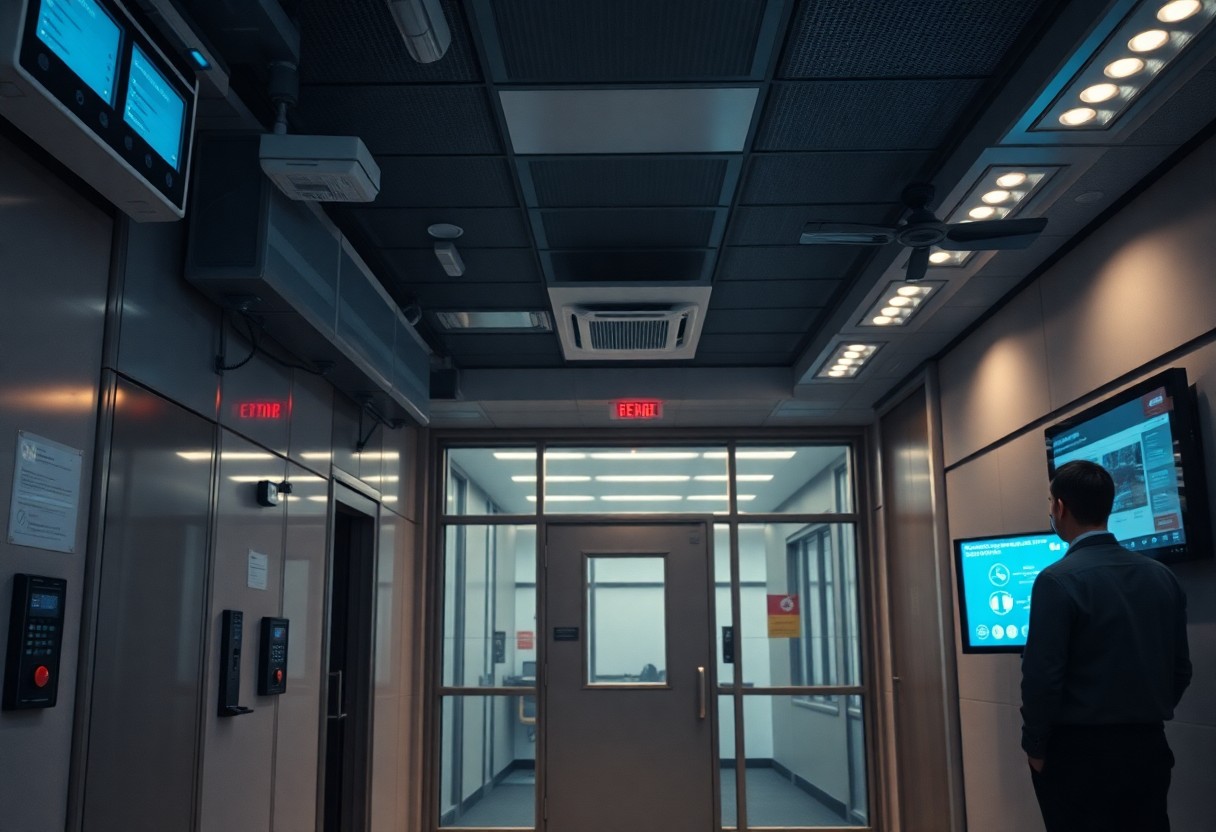
Incident Response Protocols
Despite having preventive measures in place, incidents can still occur. Establishing clear incident response protocols is crucial for minimizing damage, containing threats, and ensuring the safety of your employees. These protocols should define the steps to take when an incident arises and identify key personnel responsible for each step of the response process. Regularly reviewing and updating these protocols helps ensure they remain effective in addressing current security challenges.
Quick Response Teams
One effective way to enhance your incident response is by forming dedicated quick response teams. These teams consist of trained individuals who are ready to react immediately to security breaches or emergencies. Having a specialized group allows for faster assessments and resolutions, resulting in reduced impact from incidents and better safeguarding for your organization.
Communication Plans
You must establish clear communication plans to ensure effective coordination during incidents. These plans should outline the methods for disseminating information to all relevant parties, including employees, management, and external stakeholders. By streamlining communication, you reinforce transparency and trust throughout your organization during challenging situations.
You can enhance your communication plans by incorporating a variety of communication channels and ensuring that all personnel are familiar with them. Implement methods such as emergency notification systems, internal messaging platforms, and regular training sessions to keep everyone informed. This preparation encourages a cohesive response in the event of an incident, allowing your organization to address security challenges swiftly and effectively.
Enhance Physical Security In Your Organization Conclusion
Summing up, implementing the 10 vital strategies to enhance physical security in your organization will significantly protect your assets and ensure a safe environment for your employees. By conducting thorough risk assessments, investing in access controls, and training your staff, you create a robust security culture. Regularly reviewing and updating your security measures will keep pace with evolving threats. Ultimately, prioritizing physical security not only safeguards your organization but also fosters trust and confidence among your stakeholders.
Q: What are the primary components of a comprehensive physical security strategy?
A: A comprehensive physical security strategy encompasses several key components: access control, surveillance, perimeter security, security personnel, and emergency preparedness. Access control involves managing who can enter the premises, utilizing badges or biometric systems. Surveillance systems, such as cameras, help monitor activities in and around the facility. Perimeter security may include fences, gates, and barriers to deter unauthorized access. Additionally, trained security personnel play a vital role in monitoring and responding to incidents. Emergency preparedness ensures that procedures are in place for various emergency scenarios, including evacuations and lockdowns.
Q: How can organizations effectively implement access control measures?
A: Organizations can implement effective access control measures by establishing a clear access policy, utilizing technology such as key cards or biometric scanners, and regularly reviewing access rights. The access policy should outline who has permission to enter different areas of the facility based on their role and responsibilities. Technology can streamline the process by allowing for quick authentication and tracking. Regular audits of access rights are necessary to remove clearance for individuals who no longer require it, thus minimizing potential security risks from former employees or unauthorized personnel.
Q: What role does employee training play in enhancing physical security?
A: Employee training is a vital aspect of enhancing physical security within an organization. Training programs should educate employees about security protocols, emergency procedures, and how to recognize suspicious behavior. By increasing awareness, employees can become the first line of defense against security breaches. Regular drills and refreshers can reinforce these practices and ensure that all staff members know their roles in maintaining a secure environment. Furthermore, establishing a culture of security awareness encourages employees to report concerns and contribute to the overall safety of the organization.



